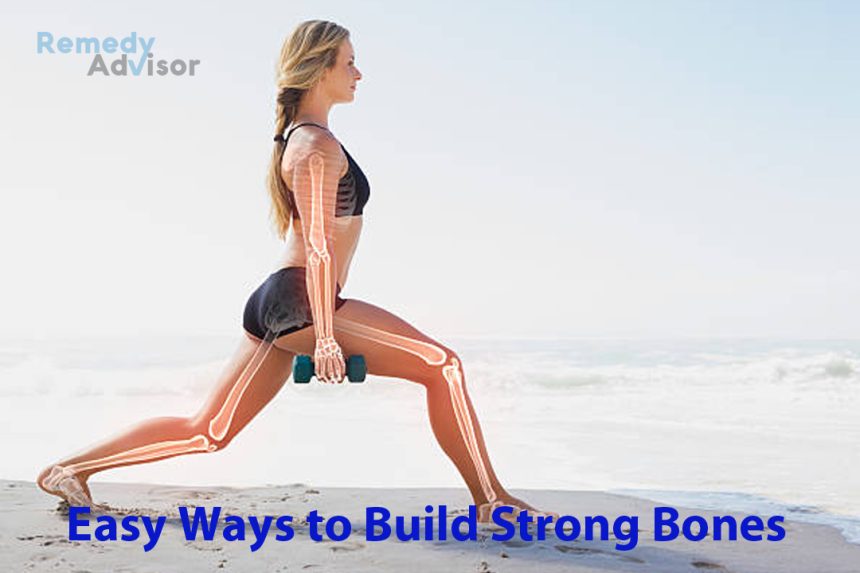Image one: The old woman moves slowly along the sidewalk, stopping occasionally to let the quicker and more agile young people around her pass by.
Her most noticeable characteristics are the color a glowing steel gray of the carefully brushed, well cared-for hair wrapped in a bundle at the top of the slender neck. And the curve, in the once-elegant back, of a spine now bent and warped in the infamous widow’s hump.
Image two: The older woman moves briskly along the sidewalk, casually dodging around her slow-moving peers and passing many of the younger people out strolling on this fine afternoon.
Arms pumping, she accelerates as the park comes into sight. Her head comes up eyes flashing, small streams of sweat running down from the glowing gray hair and she breaks into a slow jog.
Her back is absolutely straight. Most women, given a choice, would prefer to enter old age like the woman in image two: Moving with the grace and physical élan of a gazelle a gazelle.
The sad fact of the matter is that many women enter it looking more like the woman in image one stooped and bent, moving more like turtles than African antelopes. Some estimates put the present number of women suffering from this condition (known as osteoporosis) at close to eight million in the United States. That’s sad, because there’s a lot women can do to keep from turning out like image one.
Prevention starts young
“There’s a lot we can do to alleviate or slow the progress of osteoporosis,” says Paul Saltman, Ph.D., professor of biology at the University of California in San Diego and author of The California Nutrition Book. It starts with preventive measures.
“When I say prevention,” Dr. Saltman goes on, “I’m talking about a whole range of things, but primarily three of them: nutrition, exercise and hormone replacement therapy for women.
“And in this regard, it’s important to make two points: One, prevention is not just a women’s issue. Thin, Caucasian women, 50 or older, who’ve experienced early menopause, are at highest risk, but a number of studies indicate that for every five to eight women who develop it, one man does—a significant number.
“And two, it’s not a disease of age, it’s a disease of youth. To protect yourself from the effects of osteoporosis, it’s clearly better to start young and maintain good bone-building practices throughout life.”
Gregory Mundy, M.D., concurs. Dr. Mundy is a professor of medicine and chief of the Endocrinology Department at the University of Texas Health Science Center.
“You can certainly accomplish a great deal more toward preventing the onset of the disease if you begin early, preferably in the teenage years,” says Dr. Mundy. “Clean living, in the sense of eating right and getting enough exercise, is also one of your best defenses against the disease, and I think good habits established early are more likely to stick.”
So, what do you have to do to make sure your bones are as well built as they can possibly be?
Step one: Eating the right foods

“This is critical,” Dr. Saltman says. “You need enough of the right foods in the right amounts to make sure that you’re getting calcium, the nutrient most important to bone strength; that you’re getting vitamin D, the nutrient that helps your body use calcium; that you’re getting fluoride, which makes your bones denser and that you’re getting enough trace minerals zinc, copper and manganese, for example which can affect the formation of bone at the cellular level.”
The foods highest in calcium, of course, are dairy products such as milk, cheese and yogurt. Salmon and sardines with bones and dark green, leafy vegetables (mustard greens and broccoli, for example) are other calcium rich choices. So are tofu and legumes. Dr. Saltman also recommends supplementing your diet with a modest dosage of extra calcium, especially if you avoid dairy products.
“I practice what I preach,” he says. “I’m personally taking 500 milligrams a day, and I’ve got my wife taking 1,000 milligrams.” And for someone who already has osteoporosis, he advises 1,500 milligrams in conjunction with hormone replacement therapy monitored under a doctor’s care.
Step two: Exercise
This doesn’t have to mean running marathons or pumping iron.
“Walking’s a splendid exercise for developing strong bones, and it has the advantage over many others in that it’s something most anyone can do, regardless of age,”
Dr. Mundy says. Dr. Saltman agrees. “Walking’s one of the best things you can do to build and keep strong bones. Which is not to say you can’t run marathons or lift weights if you want to? It’s just that you don’t have to,” he says.
“The important thing to remember is that, yes, exercise builds bones, but it’s not something that works overnight. We recycle our bones about every seven or eight years, so you need to make exercise a regular part of your life for a long period of time to derive any skeletal benefit from it.”
An important note: All the evidence isn’t in, but research indicates that exercise may not only help prevent the onset of spinal osteoporosis it may even stop its advance and in some cases reverse it.
Consider the following results from a Danish investigation, which measured the bone mineral content of women who exercised against that of women who didn’t. The exercisers (ages 50 to 73) did moderate 1-hour workouts twice weekly, for eight months.
At the end of the study, “lumbar [lower] spine bone mineral content of the exercise group increased 3.5 percent, whereas that of the [non-exercising] control group decreased 2.7 percent,” the research team writes. “The data suggest that physical exercise can inhibit or reverse… bone loss from the lumbar vertebrae in normal women.”
An interesting point here: Although all the women were considered healthy, they all had experienced a Colles’ fracture of the forearm, a type of fracture traceable to osteoporosis.
Step three: Hormone replacement therapy
Women, like men, experience a slow loss of bone after reaching age 30, but the rate accelerates greatly with menopause. The decrease in estrogen production is largely responsible, and both Dr. Saltman and Dr. Mundy advocate sensible hormone replacement therapy for women.
“It doesn’t appear to do much to reverse the process in women over the age of 60, but it clearly either stops it or slows it down significantly in women between 50 and 60,” Dr. Mundy says. “I’d suggest it primarily for women aged 50 to 60. After that, it doesn’t seem to make much difference.”







